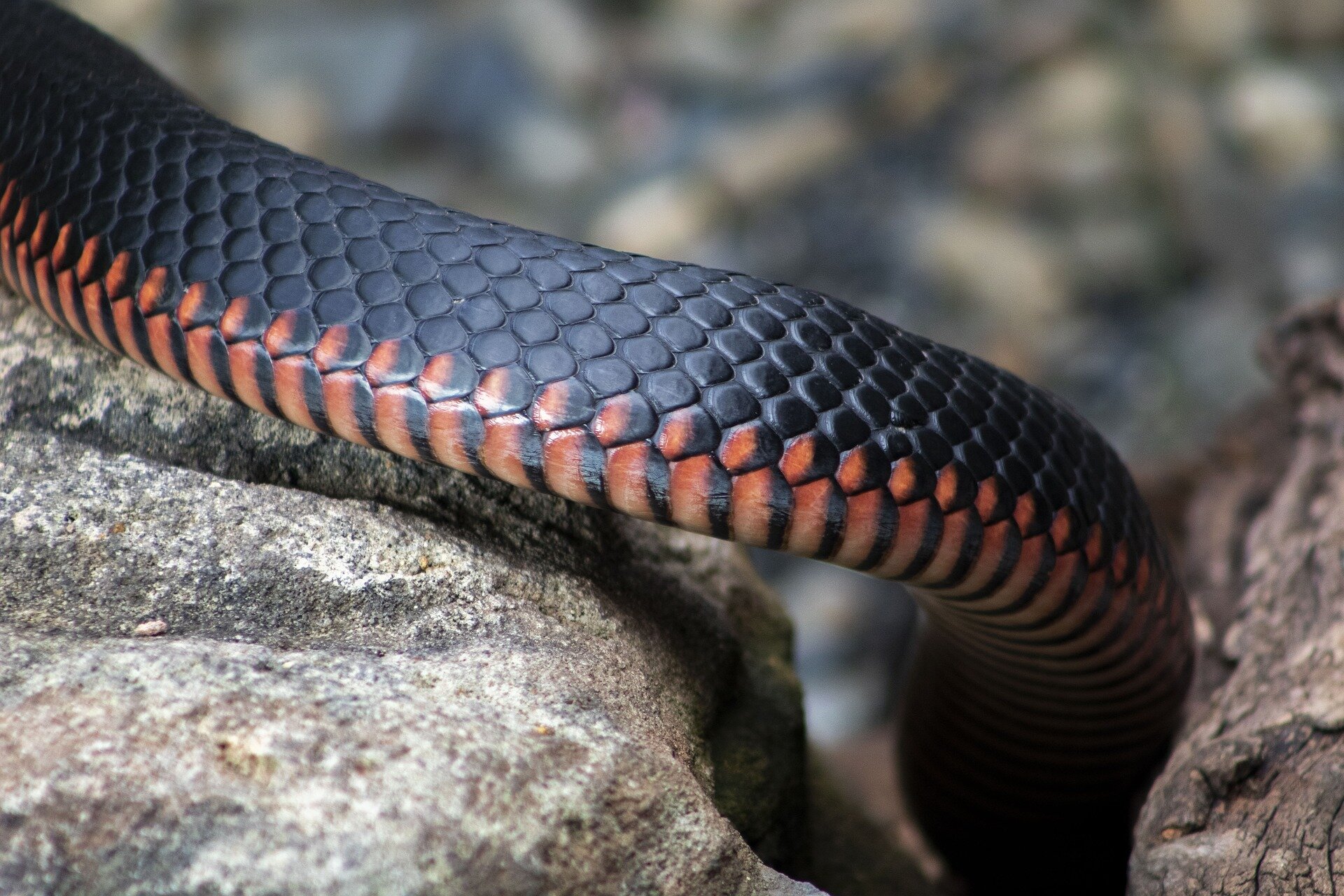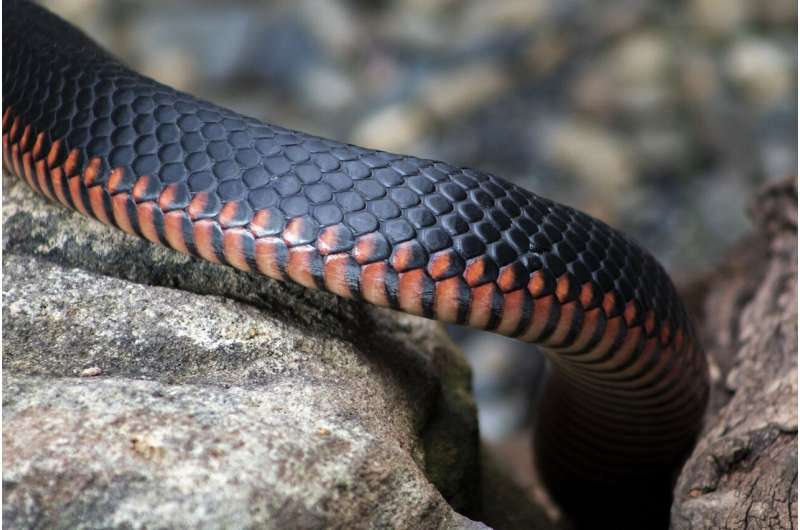

A new analysis of a decade-long collection of wildlife rescue records in NSW has delivered new insights into how humans and reptiles interact in urban environments.
Researchers from Macquarie University worked with scientists from Charles Darwin University, and the NSW Department of Climate Change, Energy, the Environment and Water to analyze over 37,000 records of snake and lizard rescues in the Greater Sydney region between 2011 and 2021.
Their study, titled “Interactions between reptiles and people: a perspective from wildlife rehabilitation records,” is published in the journal Royal Society Open Science.
Lead author Teagan Pyne, a Masters of Conservation Biology graduate at Macquarie University, says the data has enabled her team to collate a unique set of perspectives on human-wildlife interactions in urban areas.
“The paper highlights how wildlife rescue patterns reflect public perceptions of different animals,” she says. “The larger reptiles grab people’s attention, because of fear or because they are considered a nuisance, unlike wild mammals or birds which are typically rescued when they are injured,” says Pyne.
“In contrast, common small reptiles like garden skinks barely feature in our data, not because they’re rare, but because people simply don’t notice or report them.”
Increased human interactions
The paper’s corresponding author, conservation biologist Dr. Chris Jolly from the School of Natural Sciences at Macquarie University, says the research offers a timely insight into human interactions with urban wildlife through the lens of reptile rescues.
“As urbanization expands globally, human-wildlife interactions will inevitably increase,” Dr. Jolly says. “This study helps us understand the patterns behind these interactions.”
Australia’s largest city—Sydney—is teeming with scaly life, and Dr. Jolly says the surprising abundance of large reptiles can be partly attributed to the city’s retention of extensive tracts of bushland, benefiting native wildlife.
“The natural landscape of Sydney, with its waterways and undulating hills, means that we have the joy of having reptiles, such as eastern blue tongue lizards, in our backyards in suburbia,” he says.
Size matters
The study found a clear bias towards larger reptiles in rescue records, with two species accounting for almost two-thirds of all reptile rescues. These are the sleekly beautiful but highly venomous red-bellied black snake, and the eastern blue-tongue lizard, often considered a harmless garden companion.
“Wildlife rehabilitators get calls to rescue injured animals, and they often save injured blue-tongue lizards,” Dr. Jolly says. “But our data shows the most common reason for reptile rescue is ‘unsuitable environment’—often code for removing snakes from backyards.”
Another pattern apparent in reptile rescues was seasonal, with numbers tripling between August and September at the start of the Australian spring. Spatial patterns saw rescues concentrated in areas of denser human population and along major roads.
But while reptile activity varies with seasons, so does human activity; and Dr. Jolly says that wildlife rescue data is driven by the combination of reptile activity and people’s behavior and their locations.
Still, despite the vast numbers of reptiles living throughout urbanized Sydney, including plenty of large, highly venomous snakes—very few snake bites are recorded.
“People call up to get venomous snakes removed because they fear them, but public awareness also means people wear shoes when they go outside and they know which snakes are venomous and which are not,” Dr. Jolly says.
Senior author Professor Rick Shine says the team compared the data with a similar survey conducted 20 years earlier.
“Even though rescue numbers had increased tenfold, the same large-bodied species continue to dominate reptile rescue records,” Professor Shine says.
He says wildlife rescue datasets are a remarkable resource that can give valuable insights into human-wildlife interactions and complement traditional survey techniques.
The researchers also highlight the potential for wildlife rescue data to inform targeted public education campaigns and management strategies, particularly around seasonal snake activity and roadkill prevention.
More information:
Interactions between reptiles and people: a perspective from wildlife rehabilitation records, Royal Society Open Science (2024). DOI: 10.1098/rsos.240512. royalsocietypublishing.org/doi/10.1098/rsos.240512
Provided by
Macquarie University
Citation:
Snakes in the city: Ten years of wildlife rescues reveal insights into human-reptile interactions (2024, October 1)
retrieved 1 October 2024
from https://phys.org/news/2024-10-snakes-city-ten-years-wildlife.html
This document is subject to copyright. Apart from any fair dealing for the purpose of private study or research, no
part may be reproduced without the written permission. The content is provided for information purposes only.